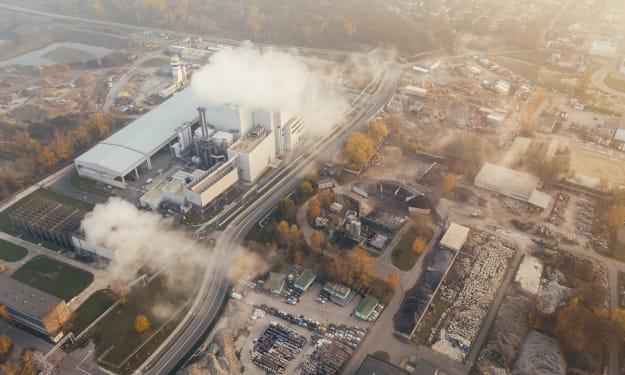Moment Davido broke into tears on his weeding day
On Tuesday, Lagos witnessed a spectacle of love and emotion as Afrobeats sensation David Adeleke, popularly known as Davido, tied the knot with his longtime partner, Chioma Rowland. The wedding, which took place at the prestigious Eko Hotel and Suites, was not just a union of two hearts but a grand event that drew the attention of dignitaries, celebrities, and fans alike.The moment that has since captured the hearts of many was when Davido, overwhelmed by the gravity and beauty of the moment, broke down in tears. This poignant scene, caught on video and widely circulated online, showed the ‘Assurance’ singer surrounded by his supportive groomsmen. As cheers erupted around him, the depth of Davido’s emotions was laid bare. His bride, Chioma, tenderly wiping away his tears, added to the touching display of their deep bond and affection.Davido’s wedding was a star-studded affair, reflecting the high regard and wide-reaching influence he holds. The guest list was a testament to his status, featuring an array of prominent figures from various sectors. His uncle, Ademola Adeleke, the Governor of Osun State, was present, underscoring the familial ties and support that have always been a part of Davido’s journey. Former President Olusegun Obasanjo, a significant figure in Nigeria’s history, also graced the event, highlighting the wedding’s importance on a national scale.From the political arena, former Akwa Ibom State Governor Udom Emmanuel was in attendance, alongside the revered Ooni of Ife, HRH Adeyeye Enitan Ogunwusi, who brought a touch of royal splendor to the ceremony. The presence of such notable individuals underscored the significance of this union not just as a personal milestone for Davido and Chioma but as a moment of cultural and social importance.The entertainment industry, of which Davido is a cornerstone, was well-represented by luminaries such as Patoranking, Obi Cubana, and Seyi Tinubu. Fellow musician B-Red, who is also Davido’s cousin, was there to celebrate the joyous occasion. Sports stars like Victor Osimhen, and popular personalities such as Craze Clown and Paul Okoye, added to the diverse mix of attendees, blending the worlds of music, business, sports, and comedy.Ebuka Obi-Uchendu, known for his charismatic presence and hosting prowess, helmed the event, ensuring that the celebrations were smooth and memorable. His role as the host added a layer of elegance and sophistication, aligning perfectly with the high-profile nature of the wedding.The emotional breakdown of Davido during the ceremony can be seen as a reflection of his journey – one marked by significant highs and lows. From losing his mother at a young age to facing public scrutiny and personal challenges, Davido’s path has not been without its trials. However, his ability to rise above these adversities and find profound happiness in his union with Chioma speaks volumes about his resilience and the strength of their relationship.Chioma Rowland, who has been a steadfast presence in Davido’s life, shares a story intertwined with his. Their relationship, often under the public eye, has withstood rumors and challenges, making their wedding day a celebration of true love and commitment. Her gesture of wiping Davido’s tears during the ceremony was more than just an act of comfort; it symbolized their mutual support and the deep emotional connection they share.The grandeur of the wedding, coupled with the heartfelt moments, created an unforgettable event that will be remembered by all who attended and those who witnessed it online. The venue, Eko Hotel and Suites, provided a perfect backdrop for such a significant event, combining luxury with an atmosphere of celebration and joy.As the newlyweds embark on this new chapter of their lives, their wedding day stands as a beacon of love, resilience, and the power of genuine connection. Davido’s tears, a moment of vulnerability and joy, captured the essence of their relationship and the collective happiness of their loved ones.In conclusion, Davido’s wedding was not just a union of two individuals but a significant cultural event that brought together people from various walks of life. The tears shed, the smiles exchanged, and the love celebrated created a tapestry of memories that will endure in the hearts of all who witnessed it. This moment, forever etched in the annals of Nigerian entertainment history, is a testament to the enduring power of love and the joy it brings. Tuesday, Lagos witnessed a spectacle of love and emotion as Afrobeats sensation David Adeleke, popularly known as Davido, tied the knot with his longtime partner, Chioma Rowland. The wedding, which took place at the prestigious Eko Hotel and Suites, was not just a union of two hearts but a grand event that drew the attention of dignitaries, celebrities, and fans alike.The moment that has since captured the hearts of many was when Davido, overwhelmed by the gravity and beauty of the moment, broke down in tears. This poignant scene, caught on video and widely circulated online, showed the ‘Assurance’ singer surrounded by his supportive groomsmen. As cheers erupted around him, the depth of Davido’s emotions was laid bare. His bride, Chioma, tenderly wiping away his tears, added to the touching display of their deep bond and affection.Davido’s wedding was a star-studded affair, reflecting the high regard and wide-reaching influence he holds. The guest list was a testament to his status, featuring an array of prominent figures from various sectors. His uncle, Ademola Adeleke, the Governor of Osun State, was present, underscoring the familial ties and support that have always been a part of Davido’s journey. Former President Olusegun Obasanjo, a significant figure in Nigeria’s history, also graced the event, highlighting the wedding’s importance on a national scale.From the political arena, former Akwa Ibom State Governor Udom Emmanuel was in attendance, alongside the revered Ooni of Ife, HRH Adeyeye Enitan Ogunwusi, who brought a touch of royal splendor to the ceremony. The presence of such notable individuals underscored the significance of this union not just as a personal milestone for Davido and Chioma but as a moment of cultural and social importance.The entertainment industry, of which Davido is a cornerstone, was well-represented by luminaries such as Patoranking, Obi Cubana, and Seyi Tinubu. Fellow musician B-Red, who is also Davido’s cousin, was there to celebrate the joyous occasion. Sports stars like Victor Osimhen, and popular personalities such as Craze Clown and Paul Okoye, added to the diverse mix of attendees, blending the worlds of music, business, sports, and comedy.Ebuka Obi-Uchendu, known for his charismatic presence and hosting prowess, helmed the event, ensuring that the celebrations were smooth and memorable. His role as the host added a layer of elegance and sophistication, aligning perfectly with the high-profile nature of the wedding.The emotional breakdown of Davido during the ceremony can be seen as a reflection of his journey – one marked by significant highs and lows. From losing his mother at a young age to facing public scrutiny and personal challenges, Davido’s path has not been without its trials. However, his ability to rise above these adversities and find profound happiness in his union with Chioma speaks volumes about his resilience and the strength of their relationship.Chioma Rowland, who has been a steadfast presence in Davido’s life, shares a story intertwined with his. Their relationship, often under the public eye, has withstood rumors and challenges, making their wedding day a celebration of true love and commitment. Her gesture of wiping Davido’s tears during the ceremony was more than just an act of comfort; it symbolized their mutual support and the deep emotional connection they share.The grandeur of the wedding, coupled with the heartfelt moments, created an unforgettable event that will be remembered by all who attended and those who witnessed it online. The venue, Eko Hotel and Suites, provided a perfect backdrop for such a significant event, combining luxury with an atmosphere of celebration and joy.As the newlyweds embark on this new chapter of their lives, their wedding day stands as a beacon of love, resilience, and the power of genuine connection. Davido’s tears, a moment of vulnerability and joy, captured the essence of their relationship and the collective happiness of their loved ones.In conclusion, Davido’s wedding was not just a union of two individuals but a significant cultural event that brought together people from various walks of life. The tears shed, the smiles exchanged, and the love celebrated created a tapestry of memories that will endure in the hearts of all who witnessed it. This moment, forever etched in the annals of Nigerian entertainment history, is a testament to the enduring power of love and the joy it brings.






Comments (1)
Nice work